Greek Meander
A border design also known as the zigzag, the wave crest, or the water motif. It consists of a series…
Herati Design
Also known as the fish, twin fish and Feraghan designs. Better known as the Herati. It originated in…

Herati Design
Also known as the fish, twin fish and Feraghan designs. Better known as the Herati. It originated in…

Herati Design
Also known as the fish, twin fish and Feraghan designs. Better known as the Herati. It originated in…

Herati Design
Also known as the fish, twin fish and Feraghan designs. Better known as the Herati. It originated in…

Herati Design
Also known as the fish, twin fish and Feraghan designs. Better known as the Herati. It originated in…
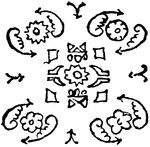
Herati Design
Also known as the fish, twin fish and Feraghan designs. Better known as the Herati. It originated in…
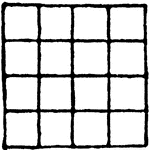
Knot of Destiny Design
This design dates back to Solomon's time. It is one of the Chinese Buddhist ornaments and is therefore…
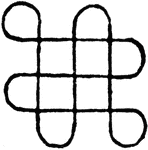
Knot of Destiny Design
This design dates back to Solomon's time. It is one of the Chinese Buddhist ornaments and is therefore…
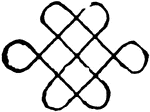
Knot of Destiny Design
This design dates back to Solomon's time. It is one of the Chinese Buddhist ornaments and is therefore…
Kulah Destiny Design
Claimed by some to have originally been intended to represent an alligator. There are exceedingly few…
Kulah Destiny Design
Claimed by some to have originally been intended to represent an alligator. There are exceedingly few…

Lamp Figures
Crude figures of lamps, like miniature tea-pots, often hang from the prayer niche of the Turkish prayer…
Lattice Design
Also known as trellis, diaper, and network. These names are applied to any design which is repeated…
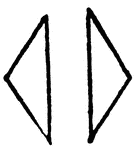
Link Design
Link in Lozenge or Spiral is a combination of two triangles with one side of each parallel with the…
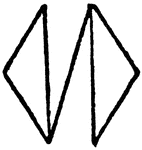
Link Design
Link in Lozenge or Spiral is a combination of two triangles with one side of each parallel with the…

Lotus Design
Very much resembles our pond lily with the exception that the color is of a brilliant purple on the…
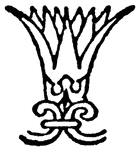
Lotus Design
Very much resembles our pond lily with the exception that the color is of a brilliant purple on the…

Lotus Design
Very much resembles our pond lily with the exception that the color is of a brilliant purple on the…

Lotus Design
Very much resembles our pond lily with the exception that the color is of a brilliant purple on the…

Lotus Design
Very much resembles our pond lily with the exception that the color is of a brilliant purple on the…
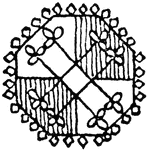
Octagon Design
Represents the eight directions of location and is found in Turkoman, Chinese, and Caucasian products.…
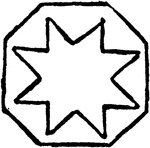
Octagon Design
Represents the eight directions of location and is found in Turkoman, Chinese, and Caucasian products.…
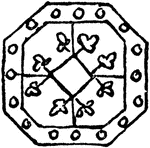
Octagon Design
Represents the eight directions of location and is found in Turkoman, Chinese, and Caucasian products.…

Pear Design
"Also known as the cone, the palm leaf, the river loop, the crown jewel, the seal, the almond, the feather,…
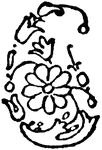
Pear Design
"Also known as the cone, the palm leaf, the river loop, the crown jewel, the seal, the almond, the feather,…

Pear Design
"Also known as the cone, the palm leaf, the river loop, the crown jewel, the seal, the almond, the feather,…

Pear Design
"Also known as the cone, the palm leaf, the river loop, the crown jewel, the seal, the almond, the feather,…
Pear Design
"Also known as the cone, the palm leaf, the river loop, the crown jewel, the seal, the almond, the feather,…
Pear Design
"Also known as the cone, the palm leaf, the river loop, the crown jewel, the seal, the almond, the feather,…
Reciprocal Saw-Teeth
This design is sometimes call by the Persians "sechrudisih," meaning teeth of the rat. Almost distinctive…
Reciprocal Trefoil
This design was named by European experts who claim it to be an essential mark of the Polish carpets.…
Reciprocal Trefoil
This design was named by European experts who claim it to be an essential mark of the Polish carpets.…
Reciprocal Trefoil
This design was named by European experts who claim it to be an essential mark of the Polish carpets.…

Rhodian or Lily Design
Composed of small flowers with three triangular petals and a long stem. Has the appearance somewhat…

Rhodian or Lily Design
Composed of small flowers with three triangular petals and a long stem. Has the appearance somewhat…
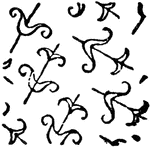
Rhodian or Lily Design
Composed of small flowers with three triangular petals and a long stem. Has the appearance somewhat…
Rhodian or Lily Design
Composed of small flowers with three triangular petals and a long stem. Has the appearance somewhat…
Ribbon
The ribbon design is a representation of a twisted ribbon. Like the barber pole stripe, the reciprocal…

Rooster
The people of Shiraz personify the Devil in a form of a rooster, which they weave in some of their choicest…

Rosette Design
A floral-shaped design which is said to resemble the "Star of Bethlehem," an early spring flower of…

Rosette Design
A floral-shaped design which is said to resemble the "Star of Bethlehem," an early spring flower of…